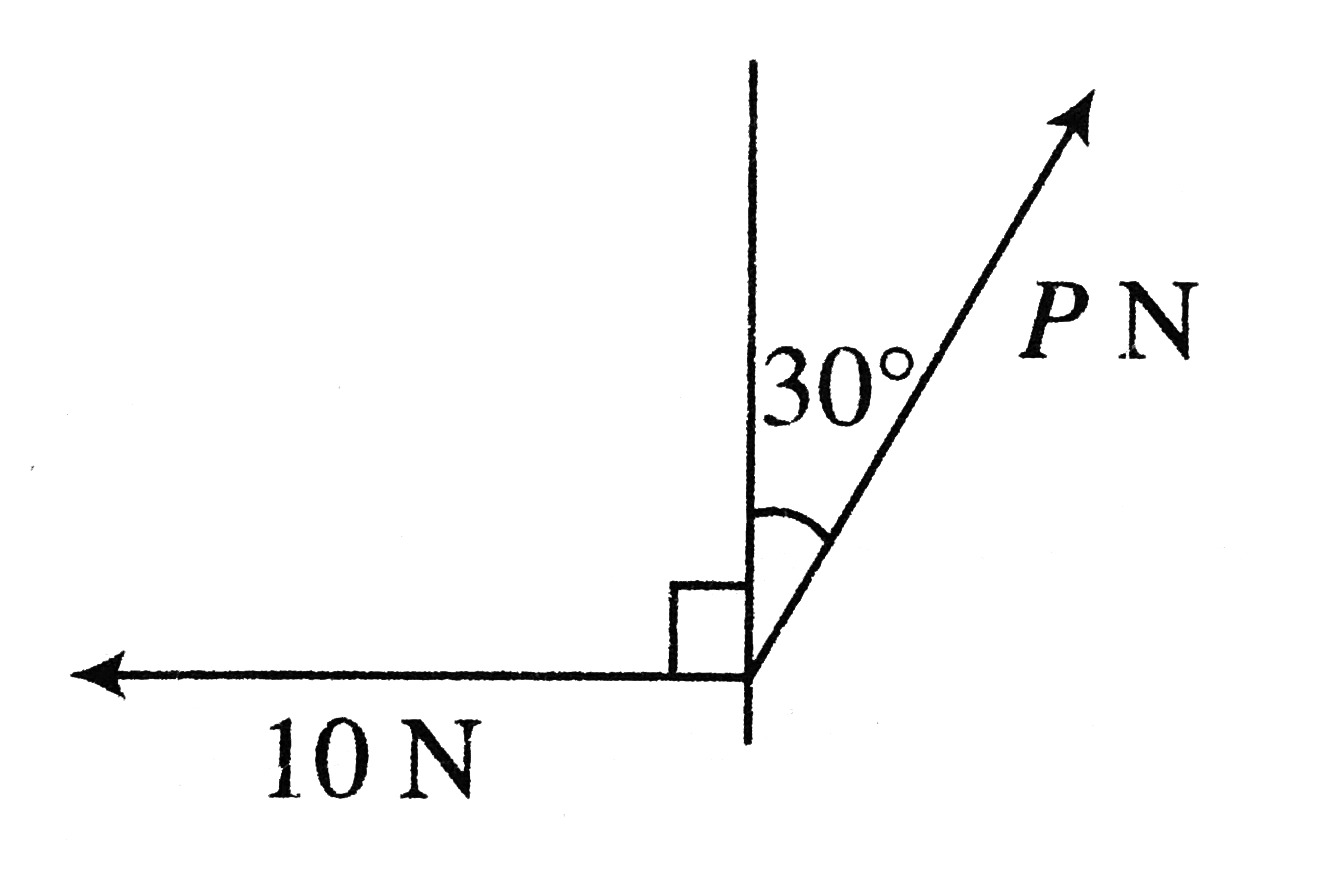P and √3 P are two forces acting in north -west and north-east directions respectively. Find the magnitude of resultant of the forces by resolving them into perpendicular components. Solution in Bengali
The correct Answer is:2P , inclined at 15∘ to the east w.r.t. the north
Step by step video, text & image solution for P and sqrt(3) P are two forces acting in north -west and north-east directions respectively. Find the magnitude of resultant of the forces by resolving them into perpendicular components. by Physics experts to help you in doubts & scoring excellent marks in Class 11 exams.
Topper's Solved these Questions
- BOOK - CHHAYA PUBLICATIONCHAPTER - VECTOREXERCISE - PROBLEM SET-II34videos
VECTOR
- BOOK - CHHAYA PUBLICATIONCHAPTER - VECTOREXERCISE - PROBLEM SET-II (Hot Numerical Problems)24videos
VECTOR
- BOOK - CHHAYA PUBLICATIONCHAPTER - VECTOREXERCISE - EXERCISE (Short Answer Type Questions-II)2videos
VECTOR
- BOOK - CHHAYA PUBLICATIONCHAPTER - THERMOMETRYEXERCISE - EXAMINATION ARCHIEVE - WBJEE1videos
THERMOMETRY
- BOOK - CHHAYA PUBLICATIONCHAPTER - VISCOSITY AND SURFACE TENSIONEXERCISE - EXERCISE (CBSE SCANNER)9videos
VISCOSITY AND SURFACE TENSION
Similar Questions
Resultant of two forces P and Q is √3Q. The resultant is inclined at 30∘ with P . Show that, either P =Q or P=2Q.
03:38View SolutionOne motor launch A is exactly 1 km north of another launch B. Both launches start from rest , at the same time, with an acceleration of 10cm⋅s−2. The launch A proceeds towards east and B towards north. Find the distance of closest approach between them and the time taken to reach that distance.
02:07View SolutionAngle between the vectors →Aand→B is θ. By resolving them into mutually perpendicular components show that the magnitude of the resultant vector is (A2+B2+2ABcosθ)1/2.
01:56View SolutionA scientist proposes a new temperature scale in which the ice point is 25X (X is the new unit of temperature) and the steam point is 305X. The specific heat capacity of water in this new scale is (in J⋅kg−1⋅X−1)
04:52View SolutionState and prove Bernoulli's theorem.
05:37View SolutionTwo horizontal forces of magnitudes of 10N and P N act on a particle. The force of magnitude 10N acts due west and the force of magnitude P N acts on a bearing of 30^(@) east of north as shown in (figure) The resultant of these two force acts due north. Find the magnitude of the resultant.
02:03View SolutionIf two forces each of magnitude 20N, are acting on a particle such that the first force (vecE_(1)) is acting along east direction and the second force (vercF_(2)) is acting along the direction 60^(@) north of west, then the magnitude of resultant force on particle is
05:07View SolutionA block is applied two forces of magnitude 5N each. One force is acting towards East and the other acting along 60∘ North of East. The resultant of the two forces (in N) is of magnitude :-
03:48View Solutionएक कण पर 5 न्यूटन, 4 न्यूटन तथा 3 न्यूटन परिमाण के बल क्रमश : पूर्व,उत्तर तथा पश्चिम दिशाओं में लग रहे हैं । एक सदिश आरेख बनाकर परिणामी बल का परिणाम ज्ञात कीजिए तथा आरेख में इसकी दिशा अंकित कीजिए ।
03:19View Solutionकिसी कण पर एक साथ बल 3 , 5 एवं 4 न्यूटन क्रमश : पूर्व, पश्चिम व दक्षिण दिशाओं में लगते है । परिणामी बल ज्ञात कीजिए ।
03:51View Solution100 न्यूटन का एक बल उत्तर से पूर्व दिशा में 30∘ के कोण पर कार्य करता है | उत्तर और पूर्व दिशा में उसके घटक ज्ञात कीजिए
03:02View Solution8 न्यूटन का एक बल पूर्व दिशा में तथा 6 न्यूटन का दूसरा बल उत्तर दिशा में कार्य करता है | दोनों बलों का परिणामी ज्ञात कीजिए|
03:00View Solutionयदि एक कण पर लगे परिमाण P तथा P√3 के दो बलों के परिणामी बल का परिमाण P हो, तो उनके बीच का कोण है
View SolutionTwo forces act on a 16 kg object. The first force has a magnitude of 68 N and is directed 24∘ north of east. The second force is 32 N, 48∘ north of west. What is the acceleration of the object resulting from the action of these two forces ?
04:10View SolutionTwo horizontal forces of magnitudes of 10N and PN act on a particle. The force of magnitude 10N acts due west and the force of magnitude PN acts on a bearing of 30∘ east of north as shown in (figure) The resultant of these two force acts due north. Find the magnitude of the resultant.
 View Solution
View Solution

